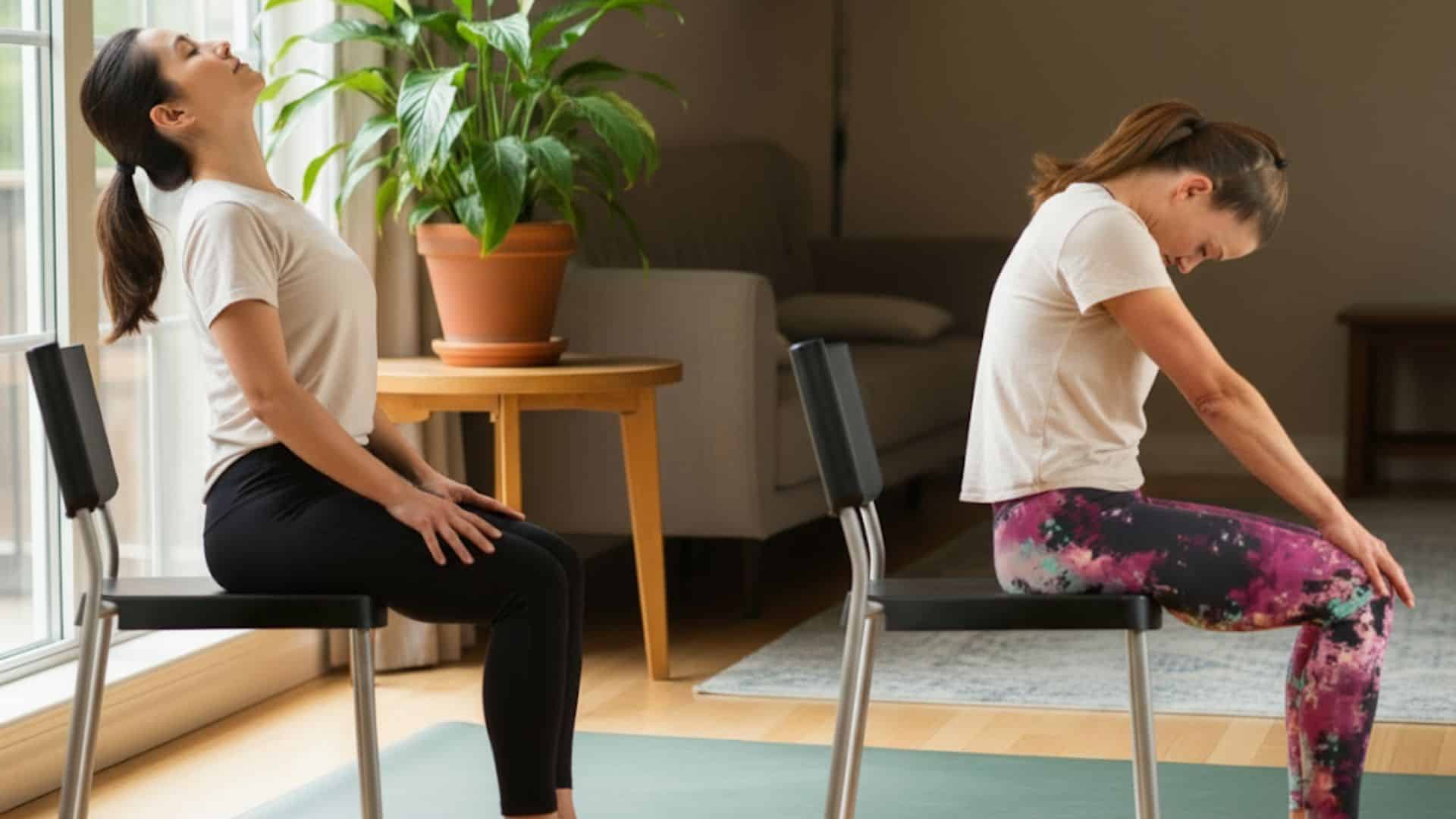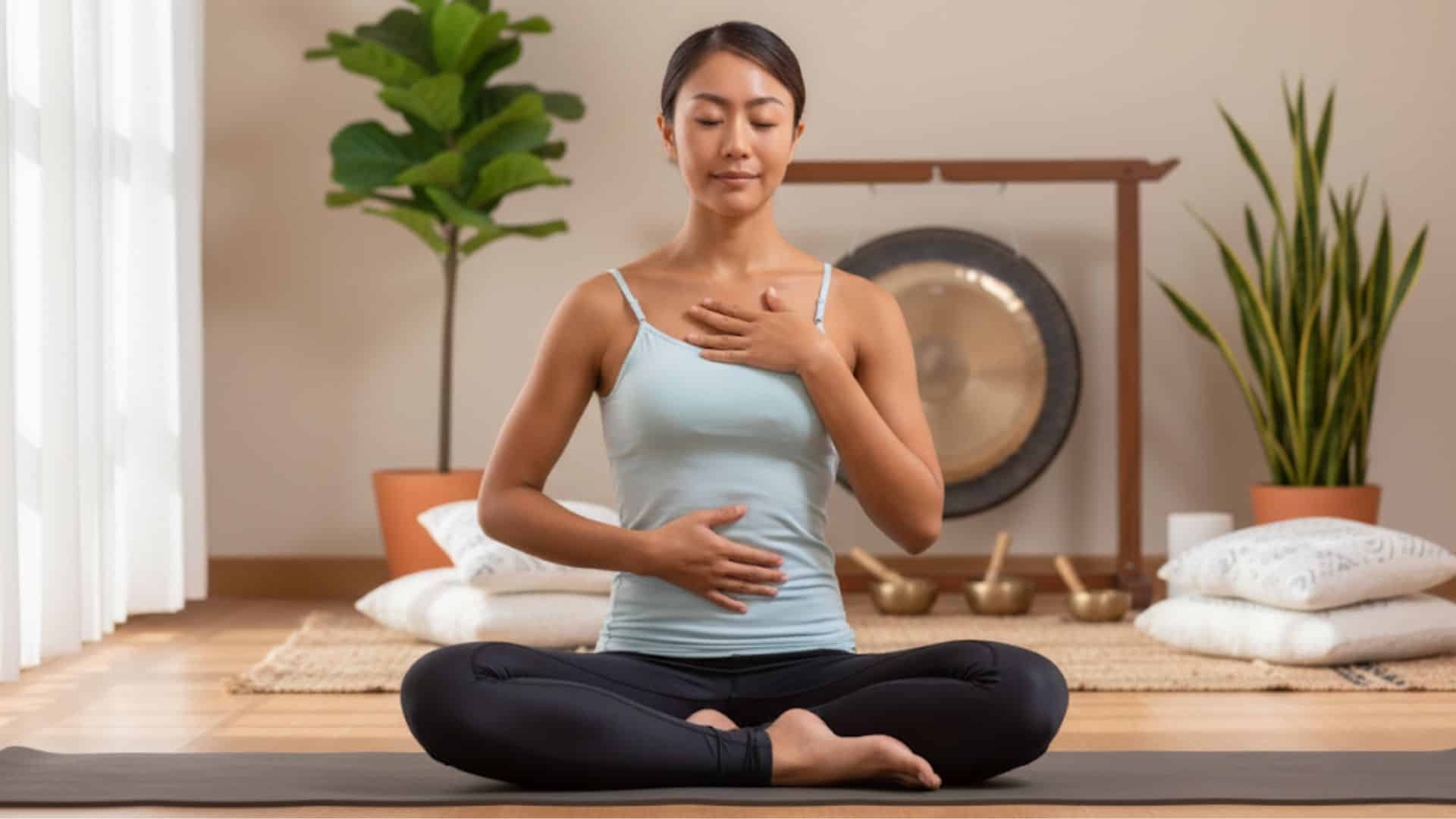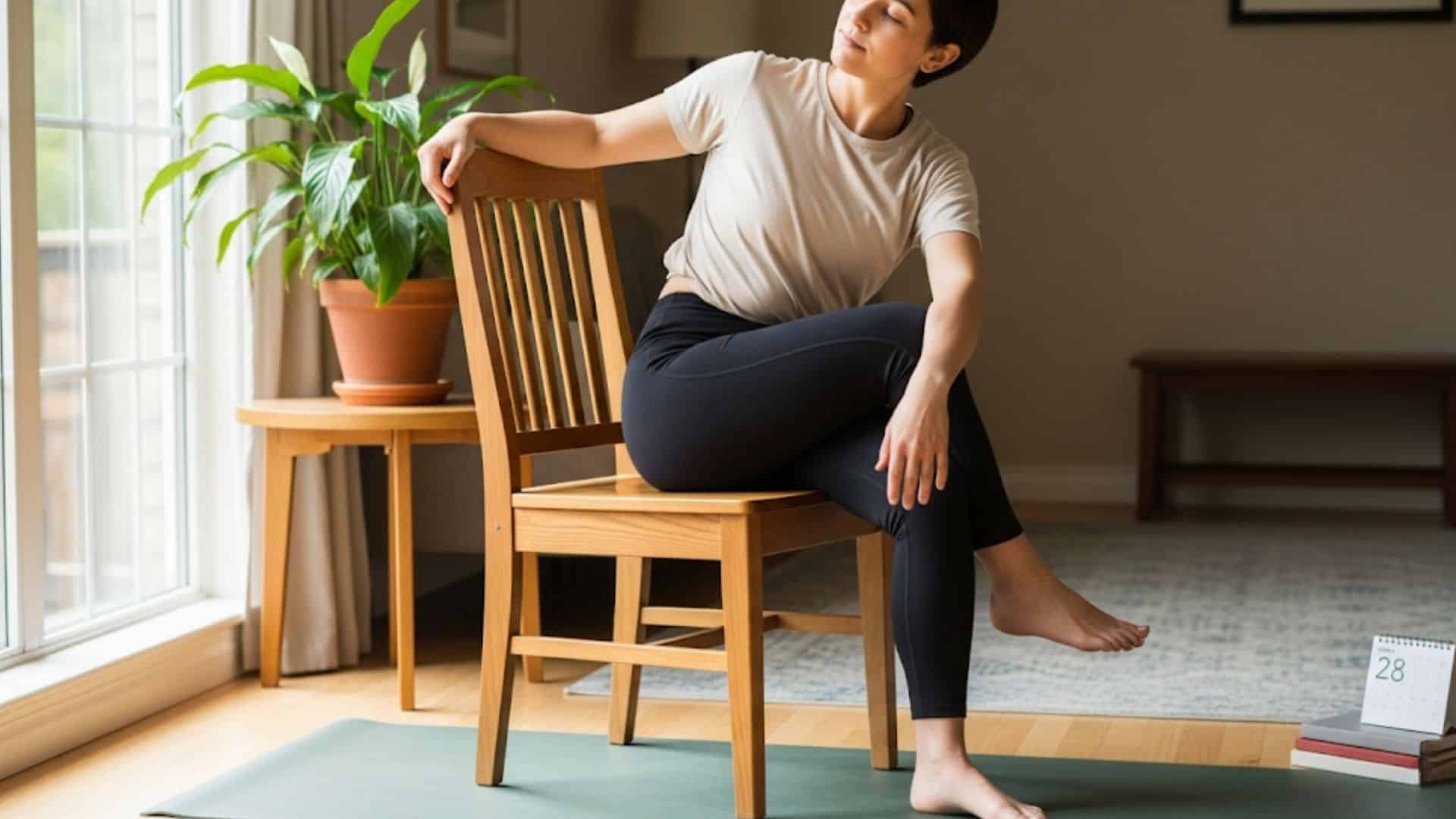Sometimes fitting exercise into a busy day feels almost impossible. I found the 28-day chair yoga challenge, and it completely changed how I look at movement.
Using only a chair, I was able to stretch, build strength, and feel calmer without needing space or special gear. Each short session was easy to follow and left me feeling more balanced and steady.
Now it’s your turn to try. The 28-day chair yoga challenge is designed to be simple, supportive, and consistent. You don’t need experience or flexibility to begin. Just set aside a few minutes each day with a chair.
By the end, you’ll notice better balance, improved mobility, and a calmer mind that carries into your daily routine.
Why Commit to a 28-Day Chair Yoga Challenge
A 28-day chair yoga challenge offers a simple way to build consistency and stay active. The short, daily sessions make it easier to fit movement into your schedule without adding extra stress.
Over time, this steady routine can support better flexibility, balance, posture, and overall well-being.
Committing to 28 days also gives your body time to adjust and show gradual improvements. It’s less about intensity and more about regular practice that feels manageable.
By the end of the challenge, you may notice positive changes in how you move and feel each day. This approach provides structure, keeps you accountable, and makes it easier to continue healthy habits well beyond the 28 days.
How is the Challenge Structured?

This chair yoga challenge runs for 28 days with daily sessions lasting just 10 to 20 minutes. Each day builds on the previous one with simple movements that get easier over time.
You can follow along daily or focus on weekly themes depending on your schedule. The beauty of this challenge is its simplicity and accessibility for everyone.
You only need a sturdy chair to get started, though a yoga strap or small weights can add variety. The sessions are designed to fit into busy schedules without overwhelming your day.
Consistency helps you build strength and flexibility gradually while reducing injury risk. Practice at the same time each day to create a habit that sticks.
Keep water nearby and wear comfortable clothing that allows you to move freely during each session.
Week-by-Week Breakdown
To make the 28-day chair yoga challenge easier to follow, here’s a simple weekly guide. Each week builds on the last so you can progress step by step without feeling overwhelmed:
Week 1: Building Foundations

Your first week focuses on creating healthy movement patterns and proper breathing techniques. This foundation week helps your body adapt to gentle stretching while teaching correct posture alignment.
You’ll learn basic movements that prepare your muscles and joints for deeper poses later. The emphasis stays on comfort and establishing a daily routine that feels sustainable.
Poses to Try:
- Seated mountain pose for posture awareness and spinal alignment
- Gentle neck rolls to release tension and improve mobility
- Seated forward fold to stretch your back and hamstrings safely
Week 2: Improving Flexibility

Week two concentrates on increasing your range of motion through targeted stretching sequences. Your muscles become more flexible as you work on areas that typically feel tight from daily activities.
This week introduces movements that gradually open your hips, shoulders, and spine. You’ll notice improved mobility and less stiffness in common problem areas.
Poses to Try:
- Seated cat-cow stretches to mobilize your spine and improve flexibility
- Seated spinal twist to increase rotation and release back tension
- Seated side bends to stretch your ribs and improve lateral movement
Week 3: Strength and Balance

The third week shifts focus toward building muscle strength and improving your stability. You’ll activate your core muscles and work on lower-body strength using your chair for support.
Balance challenges become easier as your body develops better coordination and control. This week prepares you for more complex movements while keeping everything safe and accessible.
Poses to Try:
- Seated leg lifts to strengthen your core and hip flexor muscles
- Seated warrior variations to build leg strength and improve stability
- Chair-assisted tree pose to challenge your balance while staying secure
Week 4: Flow and Mindfulness

Your final week combines everything you’ve learned into smooth, flowing sequences that feel like meditation in motion. You’ll practice linking poses together while focusing on breath awareness and mental calm.
This week focuses on relaxation techniques and mindfulness practices that help reduce stress. The sessions become more meditative as you develop greater body awareness and inner peace.
Poses to Try:
- Mini seated sun salutation to create flowing movement sequences
- Guided relaxation techniques to calm your mind and body
- Advanced breathing exercises to deepen your meditation practice
Best YouTube Channels for 28-Day Chair Yoga
Best YouTube channels for chair yoga make it easy to practice at home. These channels are gentle and designed for all ages and abilities. Here are some great options to get started:
- Bottoms Down: A series focused on gentle seated stretches and flows, perfect for improving flexibility and comfort while seated.
- Yoga For Seniors: Provides a 28-day simple chair yoga program for seniors.
- Yoga with Adriene: Offers simple, gentle chair yoga perfect for beginners.
- SeniorShape Fitness: Great for older adults or office workers needing accessible routines.
- Yoga ETC: Chair yoga tailored to seniors and beginners to improve strength and mobility.
A handy tip: Create a YouTube playlist with your favorite videos. This helps you stay consistent with a 28-day routine. Regular practice builds lasting habits and benefits your body and mind.
Sample Daily Schedule (Day 1 to Day 28)
This daily schedule shows how your practice evolves from simple basics to more complex movements over four weeks. Each phase builds on previous skills while gradually increasing the time and difficulty of your sessions:
| Days | Session Focus | Duration | Key Activities |
|---|---|---|---|
| Day 1-7 | Foundation Building | 10-15 minutes | Basic posture setup, breathing techniques, and gentle warm-ups |
| Day 8-14 | Flexibility Focus | 15-18 minutes | Hip openers, shoulder stretches, and spinal mobility work |
| Day 15-21 | Strength Development | 18-20 minutes | Core activation, leg strengthening, and balance challenges |
| Day 22-28 | Integration & Flow | 15-20 minutes | Sequence combinations, meditation, progress assessment |
Following this structured timeline helps prevent injury while ensuring steady progress throughout your challenge. You can adjust the duration slightly based on your energy level, but consistency matters more than perfect timing.
Smart Ways to Stay Consistent in a 28 Day Yoga Challenge
Completing a 28-day chair yoga challenge requires developing good habits and staying motivated throughout the process. Following these practical strategies will help you stick with your daily practice and get the most from your experience:
- Practice at the same time every day to build a consistent routine that becomes automatic
- Listen to your body and modify poses when needed rather than pushing through discomfort or pain
- Keep a simple progress journal to track improvements in flexibility, strength, and how you feel
- Celebrate small wins weekly by acknowledging your dedication and noting positive changes you experience
These strategies work together to create a sustainable practice that supports your long-term wellness goals. Remember that progress happens gradually, so be patient with yourself as you build new healthy habits.
Safe Practices for Chair Yoga

Safety should always be your top priority when practicing chair yoga to prevent injuries and ensure a positive experience. Following these essential guidelines will help you practice safely and confidently throughout your challenge:
- Chair stability check: Ensure your chair has four legs, no wheels, and sits firmly on the ground without wobbling or sliding.
- Health condition awareness: Avoid certain poses if you have had recent surgeries, herniated discs, severe osteoporosis, or uncontrolled high blood pressure.
- Medical consultation needed: Consult your doctor before starting if you’re pregnant, have chronic pain conditions, or take medications affecting balance.
- Movement modifications: Stop immediately if you feel sharp pain, dizziness, or shortness of breath, and modify poses to match your comfort level.
These safety measures protect you from potential harm while allowing you to enjoy the many benefits of chair yoga. Always remember that gentle movement should feel good, not painful, so trust your body’s signals throughout your practice.
What to Expect After the 28 Day Yoga Challenge?
Completing your 28-day challenge is just the beginning of your chair yoga practice. You can continue with your favorite poses from the challenge or repeat the entire program.
Many people find that doing the challenge again helps them master movements they struggled with initially.
Joining online chair yoga classes gives you fresh routines and community support from other practitioners. Many websites and apps offer beginner-friendly sessions you can follow at home safely.
Adding light weights or resistance bands can increase the challenge as your strength improves. Begin with very light weights and focus on maintaining proper form rather than relying on heavy resistance. Chair yoga should always feel comfortable and supportive for your body.
Conclusion
The 28-day chair yoga challenge is about building consistency with small, simple steps. I’ve seen how a few minutes each day can boost strength, improve posture, and bring more calm into daily life.
It doesn’t have to be complicated; you just need a chair and the willingness to begin.
Think about what you’ve learned here and how it can fit into your routine. Start with a few moves, stay steady, and let the progress build over time.
Remember, little habits add up to big change. If this post helped, keep scouring. Check out my other blogs for more easy tips on movement, health, and creating routines you’ll actually enjoy!





